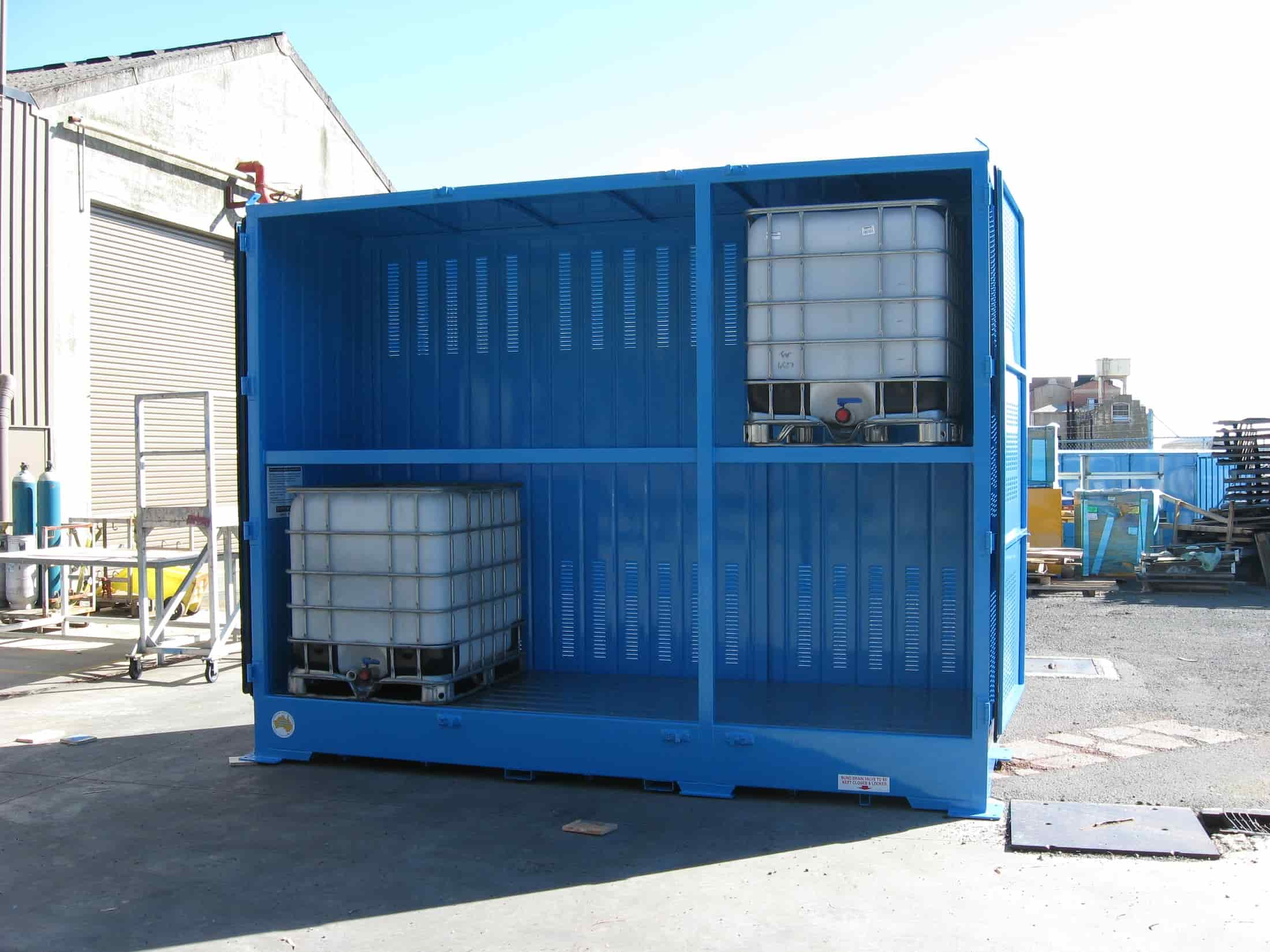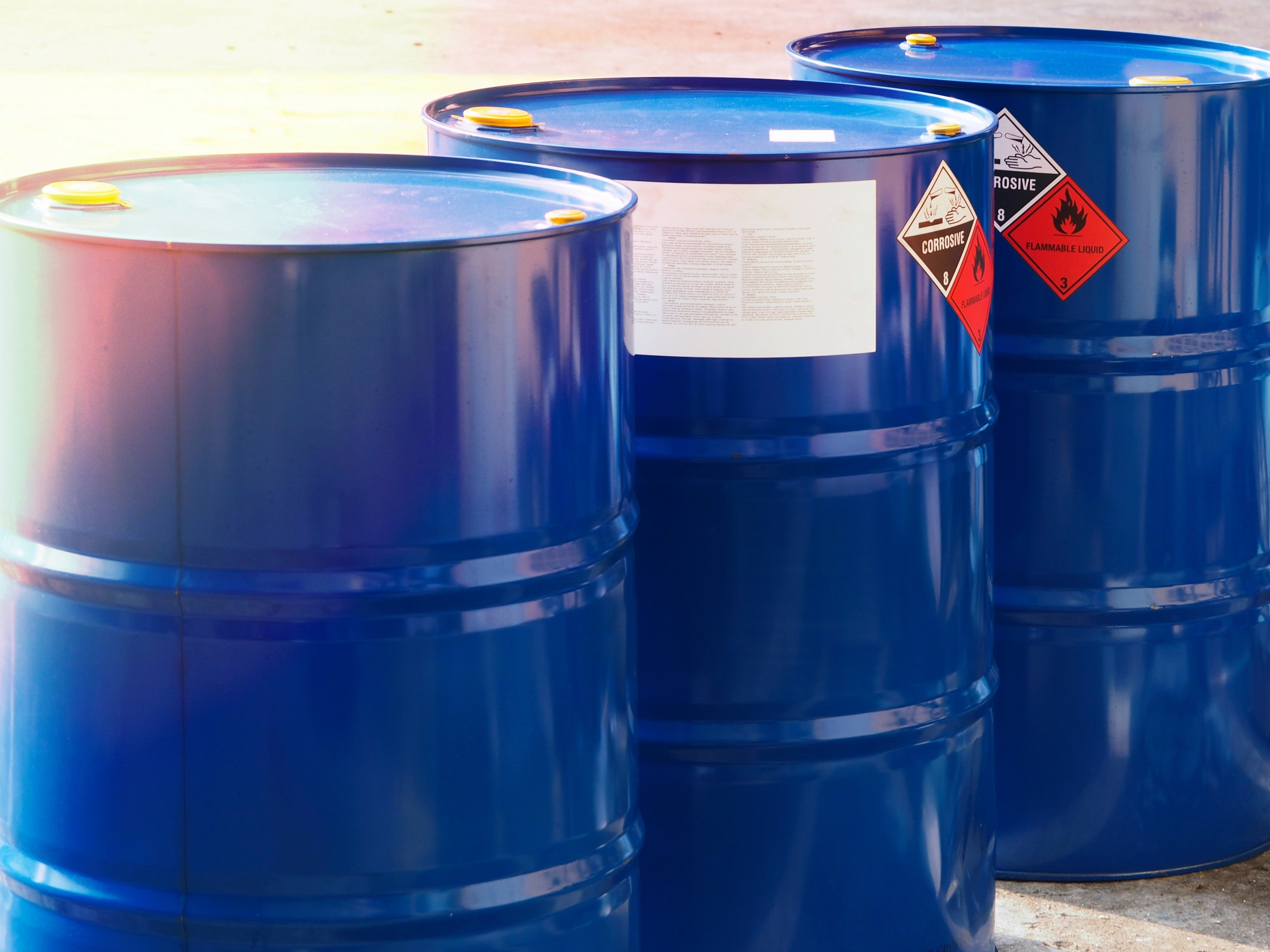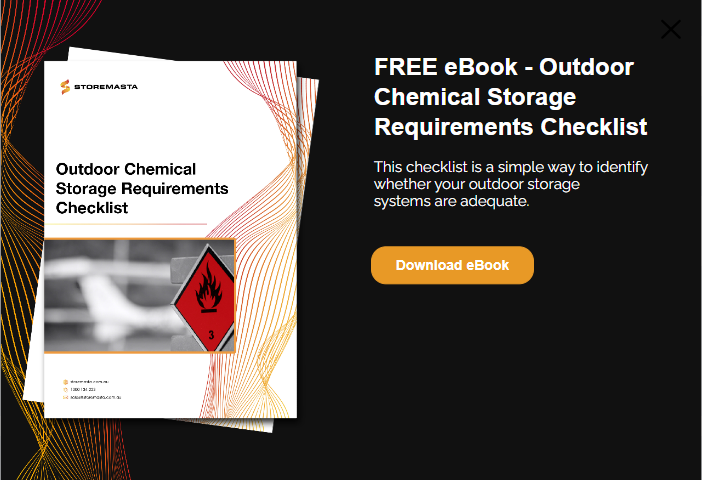Flammable liquids fires, flash back, explosions, environmental pollution, asphyxiation and human harm — these are just some of the risks associated with storing flammable liquids in the workplace. And while we’re not trying to scare you by listing these terrible incidences, we do want to highlight just how dangerous it can be to carry any type of flammable liquid. Whether you’re storing highly volatile substances such as petrol or flammable liquids including engine oil, finding the right storage solution for your Dangerous Goods is an essential (and legal) requirement for any organisation in Australia that carries them. This blog will help you assess and determine your flammable liquids storage needs by listing 6 tips for storing flammable liquids outdoors.
Tip #1. Choose The Right Location
One of the key considerations you’ll need to make when choosing how to store your Class 3 chemicals, is to decide if you’re going to house them indoors or outdoors.
To properly determine what Dangerous Goods storage is required to minimise risk at your site, we recommend conducting a thorough risk assessment. This risk assessment will allow you to identify risks in your flammable liquids handling and storage areas and determine what Dangerous Goods storage equipment will be required.

When storing flammable liquids, you should conduct a risk assessment to accurately determine your storage requirements.
However, even without a risk assessment, there are a few basic things that can guide you when selecting an appropriate location for your flammable liquids store. These include:
Storage Capacity
Flammable liquids, especially large quantities of flammable liquids, pose risk to your people, property and environment. Therefore, it’s vital that you consider safe chemical storage as an essential part of your flammable liquids safety strategy.
If you’re not sure whether you should be storing your flammables indoors or outdoors, you should first determine the quantities of chemicals that you’ll have onsite. The Australian Standard AS 1940: 2017 – The storage and handling of flammable and combustible liquids sets out the requirements for Class 3 DG storage.
The Standard explains that there are set limits on the maximum quantities of flammable liquids that may be stored in an indoor location.
According to the Standard, the aggregate capacity of cabinets that can be used indoors are:
- 850L per 250m2 of floor space on ground floors
- 250L per 250m2 of floor space on floors other than ground floors
In all cases, each aggregate quantity of flammable liquids must be segregated by a distance of at least 10 m.
Therefore, if your storage capacity exceeds these limits set by the Australian Standard, then you will have to locate your flammable liquids stores outdoors.
Outdoor Conditions and Elements
Not every business will have the ability to store flammable liquids outdoors. Your risk assessment will be able to determine if an outdoor location is the safest option for your flammable liquid stores.
Some considerations that you may need to make include:
- Is the outdoor area prone to natural disasters such as cyclones or floods?
- Will the flammable liquids store pose a risk to adjacent properties such as forests, farms or residential communities?
- Do the outdoor temperatures at your site increase risk for your stores of flammable liquids?
 The location of your outdoor store of flammable liquids store may be determined by environmental conditions and the potential for natural disasters.
The location of your outdoor store of flammable liquids store may be determined by environmental conditions and the potential for natural disasters.
The Available Space At Your Premises
The location of your stores is also determined by the requirements of AS 1940:2017. You can’t just install a store in any old position — you must consider a range of crucial factors that can assist in maintaining flammable liquids safety in your workplace.
Some safety considerations may include:
- Does the store impede evacuation procedures during an emergency?
- Is the store located near any ignition sources?
- Will incompatible substances be sufficiently segregated by the required distances?
- Is there sufficient ventilation for the stored flammable liquids?
If you can’t adhere to the safety requirements of AS 1940:2017, you will have to choose an outdoor location for your flammable liquids stores to reduce risk. These risks include fire, explosion, chemical reactions due to incompatible substances and dangerous work conditions due to flammable vapours exceeding workplace exposure standards.
Tip #2. Select A Compliant Chemical Store
Now that you’ve decided that storing your flammable liquids outdoors is the best decision for your business, you can start looking at your storage options.
While some customers choose to use an indoor flammable liquids cabinet in an outdoor location, there are many benefits to selecting an outdoor store that’s been specifically designed and constructed for the outdoor environment.
Regardless of whether you choose a cabinet or a container/store to house your Dangerous Goods, you must always ensure that your storage meets the requirements of AS 1940:2017.
Here is a comparison chart that shows the features of indoor flammable cabinets and outdoor flammable liquids container
| Specific Feature |
Indoor flammable cabinets |
Outdoor flammable liquids containers |
|
Ventilation for vapour dispersion
|
NO, although mechanical ventilation systems can be installed for indoor cabinets. |
YES, natural ventilation system due to the single skin louvered walls. |
|
Thermal protection |
YES, due to double-walled design. |
SOME, while there is no thermal barrier, the natural ventilation allows for the free movement of air within the outdoor store. |
|
Rainwater protection |
NO, flammable cabinets are designed with flat roofs. |
YES, outdoor stores are designed with cambered roofs to allow for rainwater runoff. They’re also single-walled (not double-walled) and vented. |
|
Impact damage protection |
SOME, Double-walled sheet steel construction provides some impact protection. |
YES, outdoor containers are constructed for increased impact protection. |
|
Spill containment |
YES, with spill capacity in conformance with AS 1940 |
YES, with spill capacity in conformance with AS 1940 |
| Security mechanisms to protect from theft |
SOME, Doors can be locked if required. |
YES, ISO locking bars that can be padlocked. |
|
Designed for portability |
NO |
YES |
|
Earth stake mountings for grounding |
NO |
YES |
Tip #3. Reduce Risks Unique To The Outdoor Environment
Compared to storing your flammable liquids indoors, the outdoor environment does create the opportunity for further risks. Therefore, it’s important to be aware of the risks when you’re storing your Dangerous Goods in an outdoor location.
As the above comparison chart shows, if you’re choosing to use outdoor chemical containers as a storage solution, then they are already equipped with risk control measures.
These control measures include:
- Added security – by having the special ISO locking bars installed on the outdoor flammable liquids containers, your stores of Dangerous Goods are kept safe in the outdoor environment.
- Stronger chemical store – outdoor flammable liquids containers are constructed with materials that are 25% stronger than those used in indoor flammable cabinets. This reduces the risk of impact damage from vehicles, forklifts, fallen branches etc.
During your risk assessment, you will also consider if there are further risk control measures that you can implement onsite to reduce the likelihood of theft and impact damage. These may include improved fencing or security systems or new procedures to reduce the risk of vehicles and equipment being used near the flammable liquids stores.
 Compliant outdoor chemical containers are fitted with ISO locking bars for extra security.
Compliant outdoor chemical containers are fitted with ISO locking bars for extra security.
Tip #4. Provision Of Emergency Decontamination Equipment
As we’ve explained in the earlier part of this blog, there are a wide range of risks associated with flammable liquids — including the risk of human harm.
Class 3 Dangerous Goods can cause skin irritation, burns, eye damage, blindness, asphyxiation, chronic illnesses due to repeated exposure, and fatalities. To reduce risk, you are required by AS 1940:2017 to provide eye wash facilities near your flammable liquid stores.
Eye wash facilities must comply with AS 4775 and be located within 10 m (but not closer than 2 m) to stores where packages are open. There must also be the provision for water so staff can wash their hands.
If you’re storing flammable liquids in quantities that exceed 2000 L, or your risk assessment or regulation determines it, you must also install a safety shower that complies with AS 4775.
Tip #5. Segregate From Incompatible Chemicals
Will you be storing your flammable liquids in an area that contains mixed classes of Dangerous Goods? Due to the possibility of a violent chemical reaction occurring due to the mixing of incompatible substances, your risk assessment should identify any incompatible chemicals that may react with your flammable liquids stores.

Segregating your flammable liquids from incompatible chemicals is an essential consideration in any indoor or outdoor environment.
There are specific distances required for the storage of mixed classes of Dangerous Goods. However, if you are storing your flammable liquids in a compliant indoor cabinet or outdoor container, then that storage equipment is constructed to provide you with adequate protection from incompatible chemicals.
There are many classes of Dangerous Goods that must be kept separate from Class 3 Flammable Liquids. The distances can range from 3 to 5 metres. Incompatible chemicals include flammable gases, organic peroxides, toxic substances, corrosive substances and more.
Remember also to keep your safety signage intact and in place when you’re storing your flammable liquids. Your outdoor stores must be marked with the Class 3 Flammable Liquids sign as well as the No Smoking, No Ignition Sources Within 3m sign to maintain compliance. Always replace any signage that has disappeared from your outdoor store and replace safety signs that are old, torn or faded.
Tip #6. Isolate Ignition Sources
In the outdoor environment, there is the opportunity for a wider range of personnel to come into contact with your flammable liquids stores. While there is a standard rule that any type of ignition source should not come within 3 metres of a flammable liquids store, with more people working in the area (ie people delivering/unpacking goods) there may be an increased risk of an ignition source being brought into the area.
Ignition sources may not always be as easy to identify as a lit cigarette. Sources can include hot surfaces, power points, sparks caused from piston movement, electrostatic charge and even lighting.
To negate the risk of ignition, it’s important that all relevant staff, supervisors and contractors are trained in flammable liquids safety. The identification and elimination of ignition sources should be a key factor in the staff training (as well as the refresher courses).
It’s also important to ground your flammable stores to reduce the risk of your chemicals igniting in the outdoor environment.
Are You Storing Flammable Chemicals Safely Outdoors?
As we’ve discussed in this blog, there are many considerations you must make when deciding where and how to store your flammable liquids outdoors. To learn more about safely storing your Dangerous Goods in an outdoor location, why not access our checklist? This handy guide will help you determine your outdoor chemical storage requirements. It’s available now for download — and it’s completely free.
Joining the team as a Dangerous Goods Storage Consultant, Melissa Hampton became Storemasta's Marketing Manager in late 2021. With extensive knowledge and experience in chemical compliance, Melissa is responsible for leading the Marketing team and helping shape their marketing strategy. In her spare time, you can find Melissa hiking, swimming and enjoying the great outdoors in beautiful north-west Tasmania.

